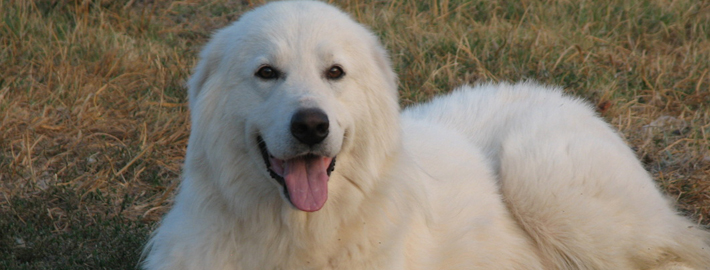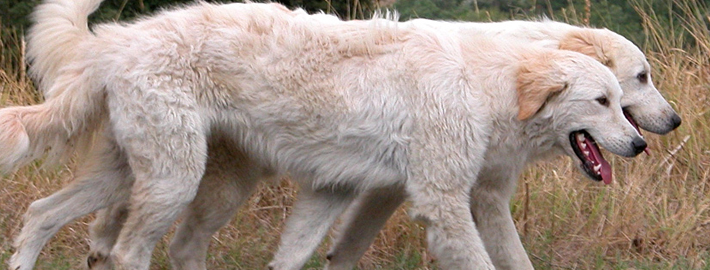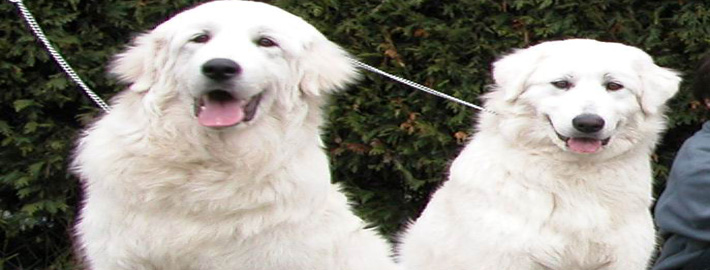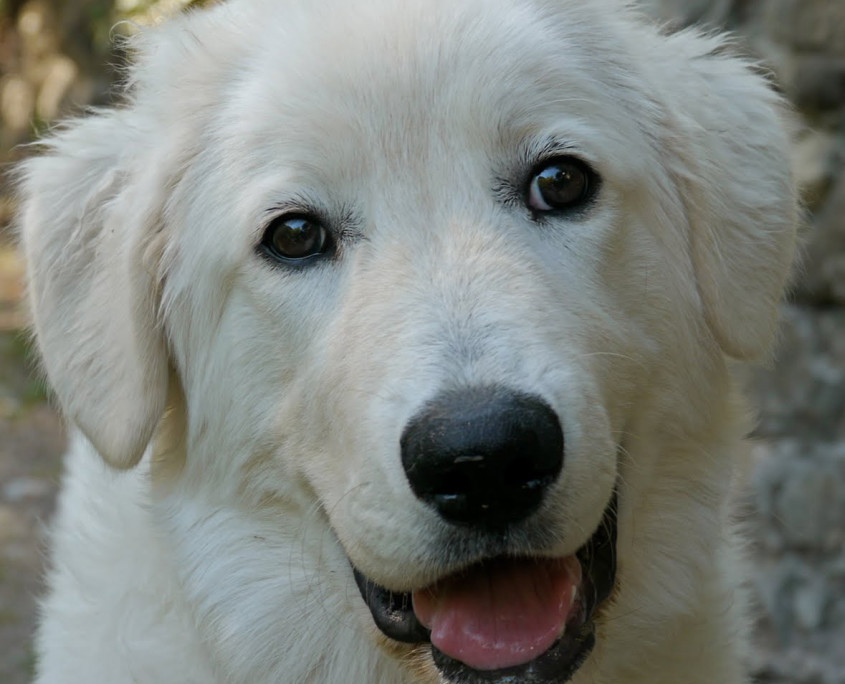What makes the Maremma Sheepdog Unique?
Members of this industrious breed are not only excellent sheepdogs, they also work well with both llamas and alpacas.
Breed Groups
Page Contents
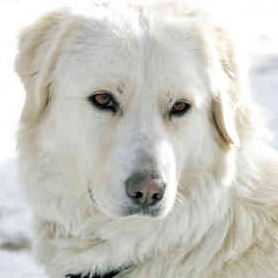
SnapShot
| Size: | Males – 25.5-29.5 inches (65-75cm) Females – 23.5-27.5 inches (60-70cm) |
| Weight: | Males – 34 to 45 kg (75 to 100 pounds) Females – 30 to 41 kg (65 to 90 pounds) |
| Origin: | Italy |
| Life Span: | 10 – 13 Years |
| Colour: | White with occasional markings in ivory, yellow or orange around the head and ears. |
| Litter Size: | 6 to 9 puppies |
Is the Maremma Sheepdog Right For You?
Maremma Sheepdogs take their jobs as estate guardians and livestock managers quite seriously. They are strong animals are known for their stamina and their courage. They don’t bark excessively, but they nonetheless make wonderful guard dogs. Members of this breed have also been used as companion animals for several decades now. Given enough exercise and mental stimulation, Maremma Sheepdogs will be well-behaved indoor pets.
In 5 Words
- Intelligent
- Dependable
- Protective
- Distinguished
- Brave
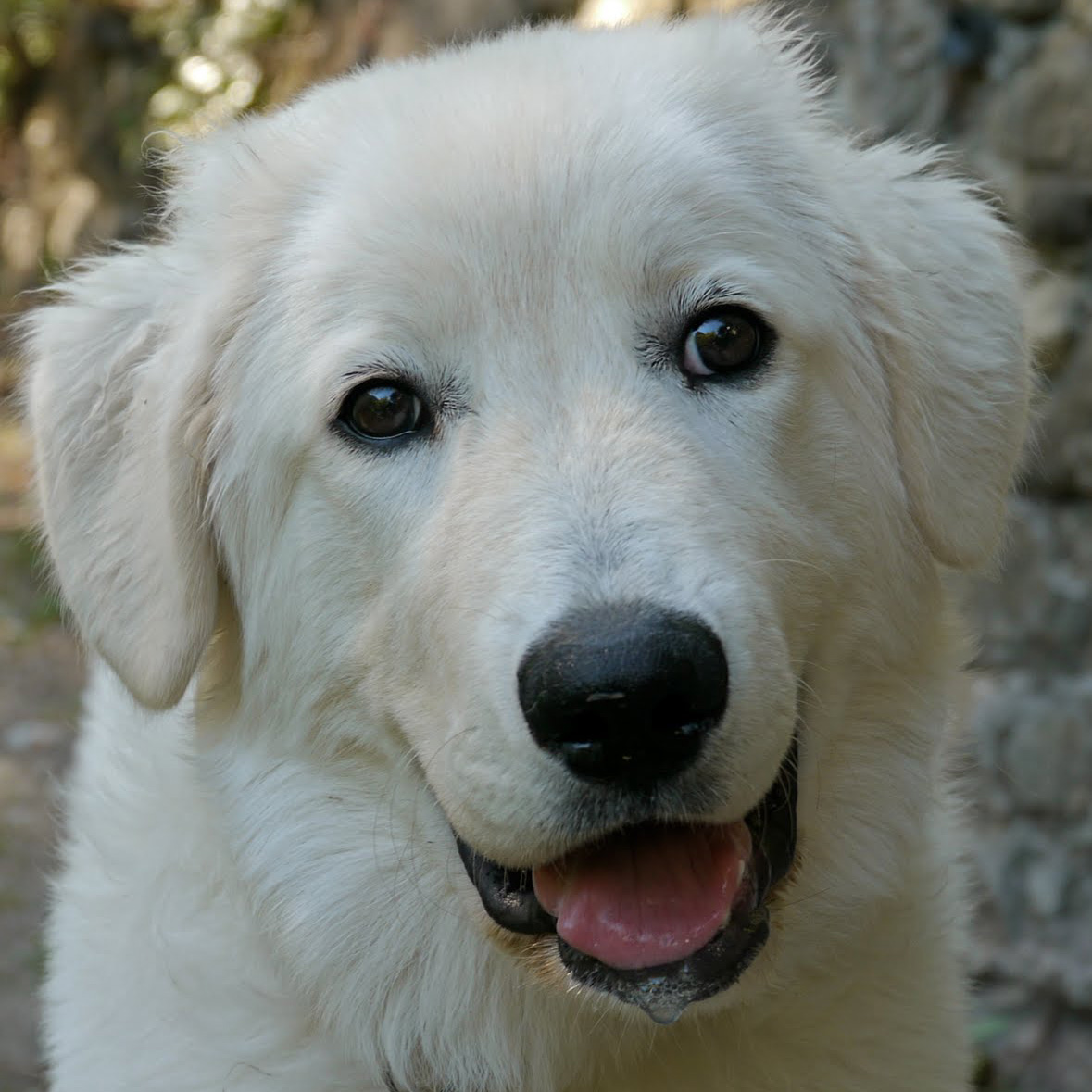
Characteristics
Learn About the Maremma Sheepdog
Description
General Description
Maremma Sheepdogs are sizable animals with large heads and distinctive features. They have strong jaws that come together in a scissor bite. They additionally possess black noses that lighten in hue as they get older to a pinkish brown color. Members of this breed also have small, pointy, v-shaped ears. These dogs generally have an intelligent and lively expression on their faces. Low-set, thickly fringed tails are yet another breed feature.
Size
Male Maremma Sheepdogs generally weigh between 77 and 99 pounds (35 and 45 kilograms) while the females are somewhat smaller at 66 to 88 pounds (30 to 40 kilograms). Height also varies by gender. Female dogs stand between 24 and 27 inches (60 to 68 centimeters) on average while males are slightly taller at 26 to 29 inches (65 to 73 centimeters) in height. However, it is not unusual for Maremma Sheepdogs to be considerably larger than the aforementioned standards.
Coat
These dogs have double coats with a thick, under layer and a long, coarse outer layer. Members of this breed typically are white in hue but ivory, pale yellow, or light orange markings may sometimes appear on their ears.
Short History of the Maremma Sheepdog
Originating in the Italian Apennine Mountains, these large dogs were created specifically to look after local sheep populations by protecting them from human thieves and animal predators. Maremma Sheepdogs resemble the Kuvasz dogs in particular, but members of this breed are additionally related to several other European dog varieties as well. It is thought that all of these aforementioned breeds had an ancestor in common sometime during the height of the Roman Empire. However, the Maremma Sheepdogs were once two divergent varieties that had each acclimated to a different altitude. They were combined into one breed during the 1950s. About twenty years later, the dogs made their way to America where they currently have many fans. Even so, the Maremma Sheepdogs are still more popular in rural areas in the United Kingdom than they are in the States.
Temperament
Maremma Sheepdogs take their jobs as estate guardians and livestock managers quite seriously. They are strong animals are known for their stamina and their courage. They don’t bark excessively, but they nonetheless make wonderful guard dogs. Members of this breed have also been used as companion animals for several decades now. Given enough exercise and mental stimulation, Maremma Sheepdogs will be well-behaved indoor pets.
These dogs get along just fine with the other animals in their households. Members this loyal breed will also form strong bonds with the human members of their families but they are certainly not lap dogs. Some Maremma Sheepdogs may instead attempt to herd people as a sign of affection while others prefer leaning on or pawing at their human owners as a way of showing they care. Even so, the dog should always be the one to determine how much affection is going to be displayed.
Members of this breed tend to be particularly wary of unfamiliar people. While they are slow to show any signs of aggression, they will defend their human family members and estates with every ounce of their being if the situation calls for it. Therefore, early obedience training and socialization are recommended to help these animals correctly determine what is a threat and what is not.
Caring for Your Maremma Sheepdog
General Health
Members of this breed do not have the heart problems that are typically seen in larger dog varieties. Maremma Sheepdogs have noses that do change color as they get older but this is customary for the breed and it is not any reason for pet owners to be concerned. However, dogs that are constantly overfed run the risk of joint and hip problems. Diets that are low in protein and calories can be used to help address this issue. Owners will also want to feed their dogs two small meals per day in order to reduce their pet’s risk of bloat, which can easily occur if the animal in question regularly gobbles up large amounts of food in a short time.
Care
Daily
These dogs need plenty of exercise on a regular basis. If they are not being used as livestock guardians,, Maremma Sheepdogs require lengthy, briskly paced walks that vary in scope and take in different scenery. Members of this breed also need a spacious home because they are large animals that must be able to run about and play in order to be at their best.
Weekly
Maremma Sheepdogs should have their teeth cleaned on a regular basis to keep them in good oral health.
Monthly
All dogs need to be given parasite prevention medications once a month to keep harmful pests at bay and these dogs are no different than their contemporaries in this regard.
Grooming & Bathing
Despite their weather resistant coats, these dogs need regular grooming to prevent their households from becoming covered in fur. This is particularly true when Maremma Sheepdogs are undergoing periods of heavy shedding.
Exercise & Training
Maremma Sheepdogs get along best when they are given a job to perform. They take their work seriously and typically enjoy it. However, these dogs should start their lessons at an early age because the first two years are particularly important as far as training Maremma Sheepdogs goes.
Members of this breed, particularly those from working lineages, aren’t especially obedient dogs. These animals also expect their owners to know what they want. Therefore, teaching them can be somewhat of a struggle. Like all breeds, Maremma Sheepdogs need a firm hand and consistent rules. Gaining the respect of the canine in question is also an essential element in obtaining their allegiance. Owners of these dogs should ideally have a fully trained Maremma Sheepdog around to provide a good example for their newest addition.
Despite their independent streak, these dogs are quite intelligent and will use their knowledge to do whatever they think best in a given scenario. This trait can be exasperating to owners at times but it is also what makes Maremma Sheepdogs such a good livestock breed. However, this characteristic does mean that unwelcome intruders will quickly be put in their place by members of this imposing breed as these dogs similarly excel at guard duties.

